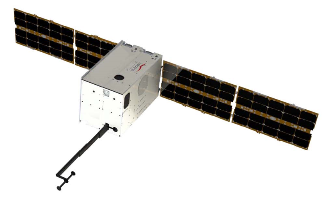| Spacecraft name | MiniCOR (Miniature CORonagraph) |
|---|---|
| Spacecraft type | CubeSat |
| Units or mass | 12U |
| Status | not launched, expected in 2027 |
| Launcher | not launched |
| Entity name | ? |
| Institution | Company |
| Entity type | Commercial |
| Nation (HQ) | US |
| Nation (AIT) | Italy |
| Manufacturer | AIVT by Argotec |
| Operator | Argotec |
| Partners | The Johns Hopkins University Applied Physics Laboratory,, Naval Research Laboratory, Space Science Research Corporation |
| Oneliner | |
| Description | |
| Sources | [1] [2] [3] [4] |
| Photo sources | [1] |
Last modified: 2024-09-03

